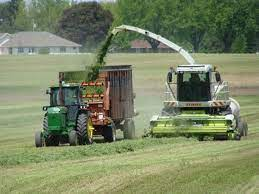Mike Ballweg, Agriculture Agent

Monitoring the quality of alfalfa growth and development is important each year and 2021 was no exception. The yearly weather variations result in optimal harvest dates ranging anywhere from May 18th to June 10th depending on the annual growing conditions. Alfalfa quality may be reduced by 3-5 points per day in Relative Forage Quality (RFQ) as the plant matures. If alfalfa quality is not tracked, farmers may miss the window of opportunity for harvesting high-quality forages. That results in higher costs for purchased feed inputs and lower milk yields thus reducing farmers’ net profits.
The forage quality difference in 2021 between harvesting at the optimal harvest date and one week later into approximately $280/acre of increased milk yields. If half of Sheboygan County’s 40,000 alfalfa acres were harvested one week earlier as a result of this UW-Extension alfalfa quality educational program, an additional $5 million of annual milk sales would be generated for Sheboygan County dairy farmers.
The forage quality information developed by Extension Sheboygan County is shared with about 550 subscribers to the Tri-County email list (Sheboygan, Washington, Ozaukee counties) and mailed directly to Sheboygan County’s 115 dairy farmers.
Other Highlights:
- One-on-one consultations with farmers and homeowners, where clients learned about the importance of crop profitability, thoughtful pesticide usage, and environmental stewardship. Through the consultations, farmers and homeowners reduce the impact of pesticides on the environment and save money when managing their crops.
- A field day was held for farmers, industry agronomists, and agency personnel where they learned about using cover crops, planting green, and N fertilization to improve soil health, water quality, and farm profits. This program was developed in collaboration with USDA Demo Farms and County Land Conservations in order to improve water quality and soil health.
- A presentation for farmers and agricultural professionals where they learned practices on harvesting and preserving corn silage and high moisture corn. This effort was designed to provide current research and crop production practices to implement on-farm or to advise their clients.




